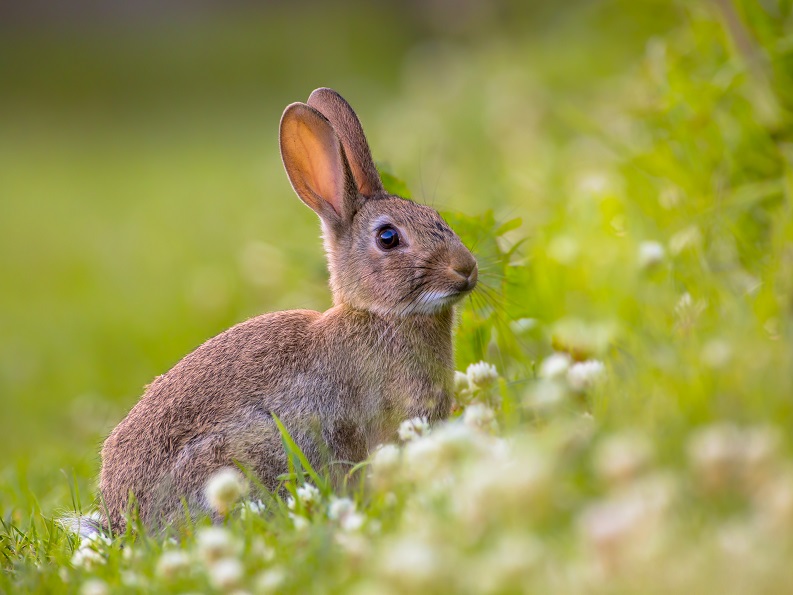
By: David Torres
Rabbits, hares, and pikas, collectively known as Lagomorphs, are known for their floppy ears, bushy tails and impressive hopping ability. But there’s more to Lagomorphs than fluffy fur and a bouncy gait. Rabbits, hares, and pikas are versatile mammals that have colonized a wide range of habitats throughout the world. They serve as prey for many species and therefore play an important role in the food webs they occupy.
Lagomorphs are divided into 2 basic groups
Lagomorpha is an order of mammals that include two basic families, the pikas(Ochotonidae), and the hares and rabbits(Lepordiae).
Pikas are small, rodent-like mammals with short limbs and rounded ears. When they crouch down, they have a compact, almost egg-shaped profile. Pikas prefer cold climates throughout Asia, North America and Europe. They often inhabit mountainous landscapes.
Hares and rabbits have short tails, long ears, and long hind legs. They have fur on the soles of their feet, a characteristic that gives them added traction when running. Hares and rabbits have acute hearing and good night vision, both adaptations to the crepuscular and nocturnal lifestyles of many of the species in this order.
There are about 80 species of lagomorphs
There are approximately 60 species of hares and rabbits. Well-known species include the European Hare, Snowshoe Hare, Arctic Hare, and Eastern Cottontail. There are approximately 30 species of pikas. The European Hare is the largest of all Lagomorphs, reaching weights between 6.6 and 14 pounds and lengths of more than 25 inches. Pikas include the smallest of all Lagomorphs. Pikas generally weigh between 3.5 and 14 ounces and measure between 6 and 9 inches long.
Lagomorphs were once thought to be a family of rodents
Lagomorphs were once classified as a family of rodents due to similarities in physical appearance, the arrangement of teeth and their vegetarian diet. But today, scientists believe that most similarities between rodents and Lagomorphs are the result of convergent evolution and not due to shared ancestry. For this reason, Lagomorphs have been promoted within the Mammalian classification tree and now run astride rodents as an order in their own right.
Lagomorphs have high reproductive rates
Reproductive rates for Lagomorphs are generally quite high. This offsets the high mortality rates they often face due to harsh environments, disease, and intense predation.
Lagomorphs are herbivores
Lagomorphs eat plants of various forms including grasses, fruits, seeds, herbs, buds, leaves and even bits of bark they strip off of deciduous and coniferous trees. They are also notorious for eating cultivated plants such as grains, cabbage, clover, and carrots. Since the plant foods they eat are nutrient-poor and difficult to digest, lagomorphs eat their droppings, thus causing the food material to pass through their digestive tract twice to maximize the number of nutrients they are able to extract.
Lagomorphs are among the most intensely hunted of any animal group
Lagomorphs serve as prey for a wide variety of predator species around the world. They are hunted by carnivores such as Bobcats, Mountain Lions, foxes, and Coyotes, as well as birds of prey such as eagles, hawks, and owls.
Lagomorphs have adaptations that enable them to elude predators
Lagomorphs have large eyes that are positioned on either side of their head, giving them a field of vision that encircles them completely. This gives Lagomorphs a better chance of spotting approaching predators since they have no blind spots. Additionally, many Lagomorphs have long back legs (enabling them to run quickly) and claws and fur-covered feet (which give them good traction). These adaptations give Lagomorphs a better chance of escaping predators that get too close for comfort.
Lagomorphs can be found throughout the world
Lagomorphs inhabit a range that includes North America, Central America, parts of South America, Europe, Asia, Africa, Australia and New Zealand. They were introduced by humans in several island throughout the world.
